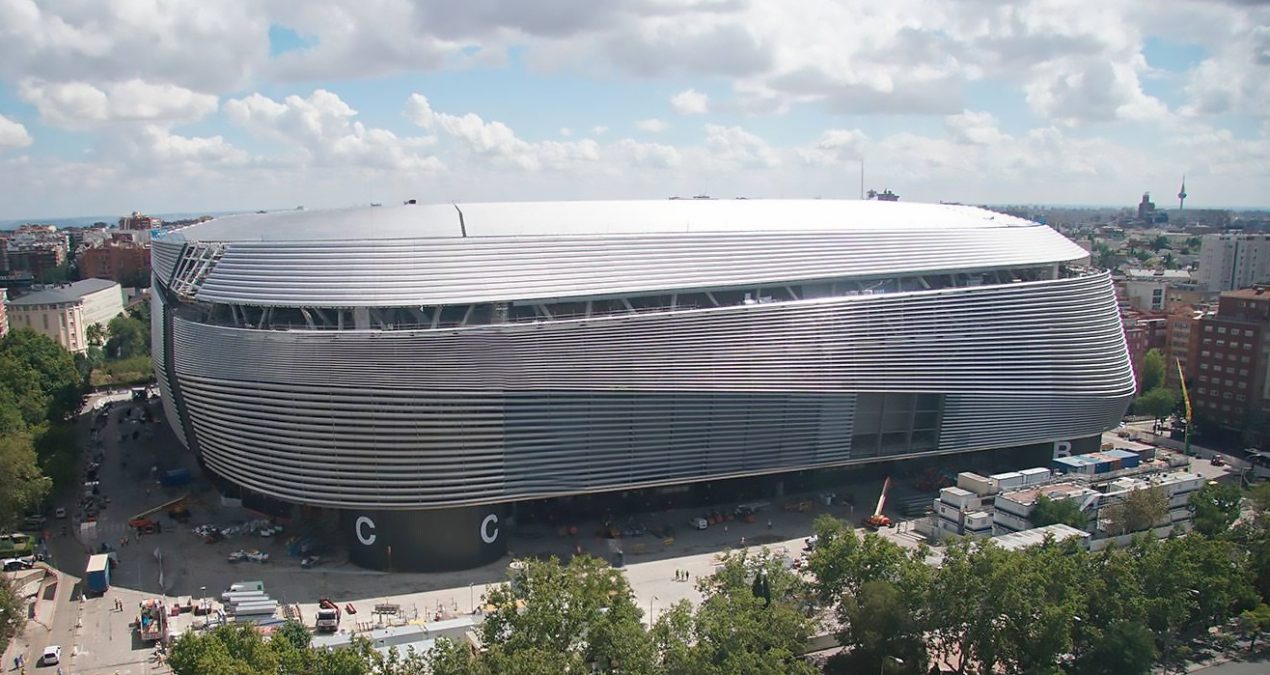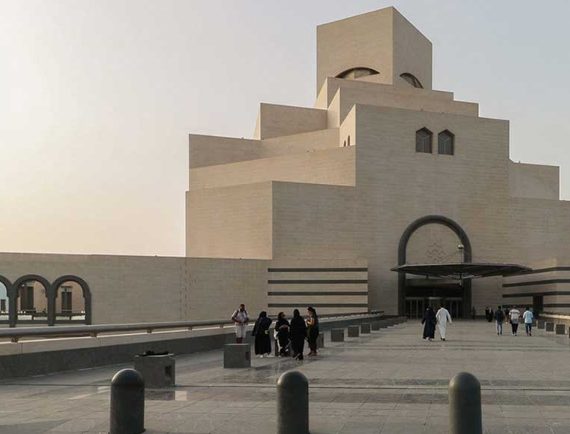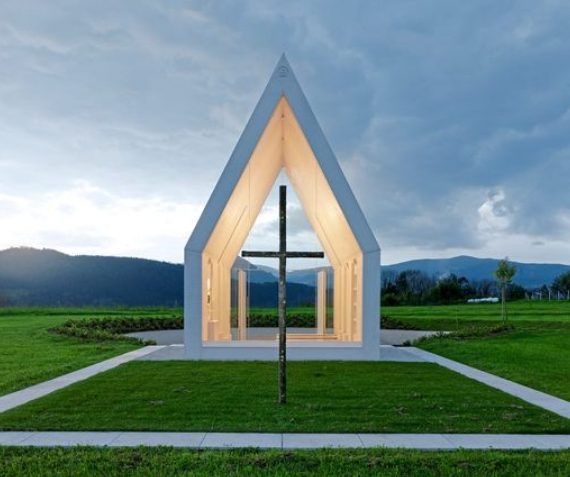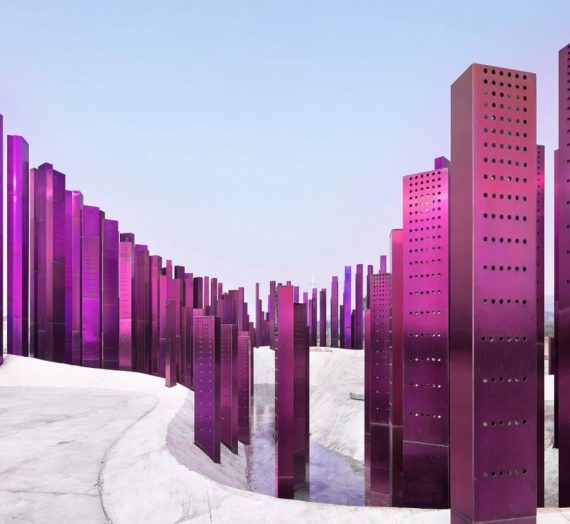The Santiago Bernabéu Stadium, home to the legendary Real Madrid football club, stands as a beacon of innovation, design, and functionality in the heart of Madrid. More than just a sports venue, it is a world-class architectural project that has undergone remarkable transformations since its inauguration in 1947. The recent redevelopment has propelled it into the 21st century, redefining the concept of a stadium as a multifunctional and sustainable urban landmark.
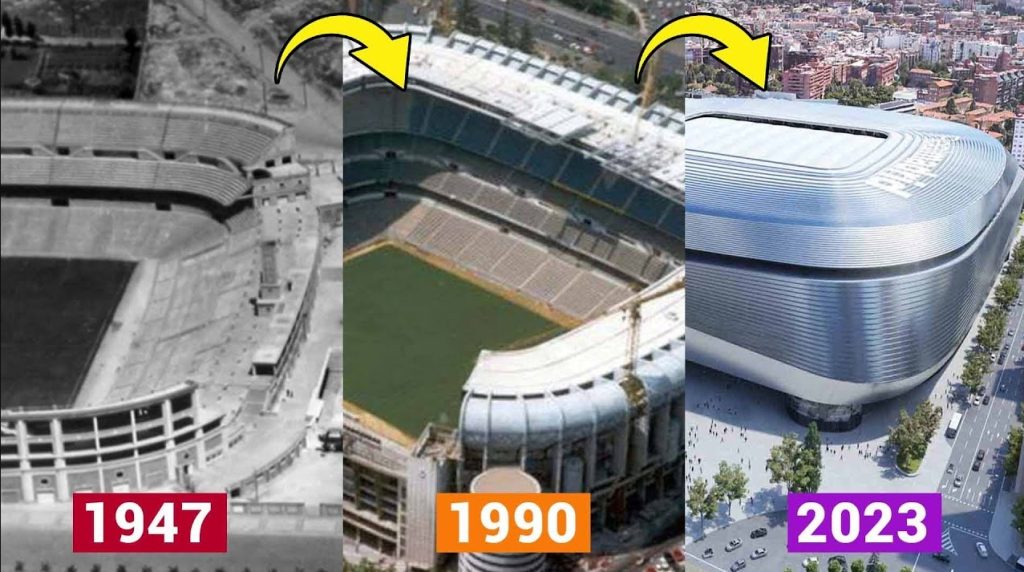
Historical and Architectural Evolution
Originally designed by architects Manuel Muñoz Monasterio and Luis Alemany Soler, the Santiago Bernabéu was envisioned as a grand arena to match Real Madrid’s growing global reputation. The original structure featured clean, modernist lines, and a capacity that reflected the ambitious spirit of the club. Over the decades, multiple renovations have expanded its functionality and aesthetic appeal, including significant updates in the 1980s and early 2000s.
The most recent redevelopment, spearheaded by GMP Architekten and L35 Ribas, represents a complete reimagining of the stadium. This ambitious project began in 2019 and is expected to solidify its status as one of the most advanced sports arenas in the world.
Architectural Highlights
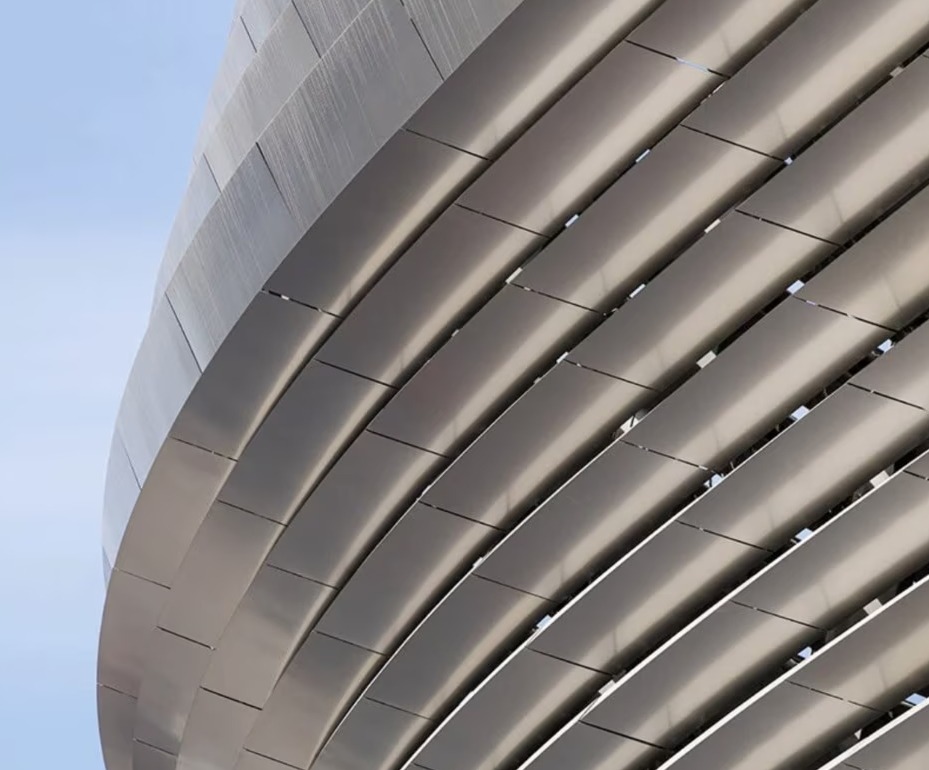
1. Futuristic Façade
The new Santiago Bernabéu features a striking metallic façade made of steel and aluminum panels. These materials reflect light dynamically, creating a fluid, modern appearance that changes with the time of day. The façade also incorporates LED lighting systems, allowing for captivating visual displays that turn the stadium into an iconic night-time landmark.
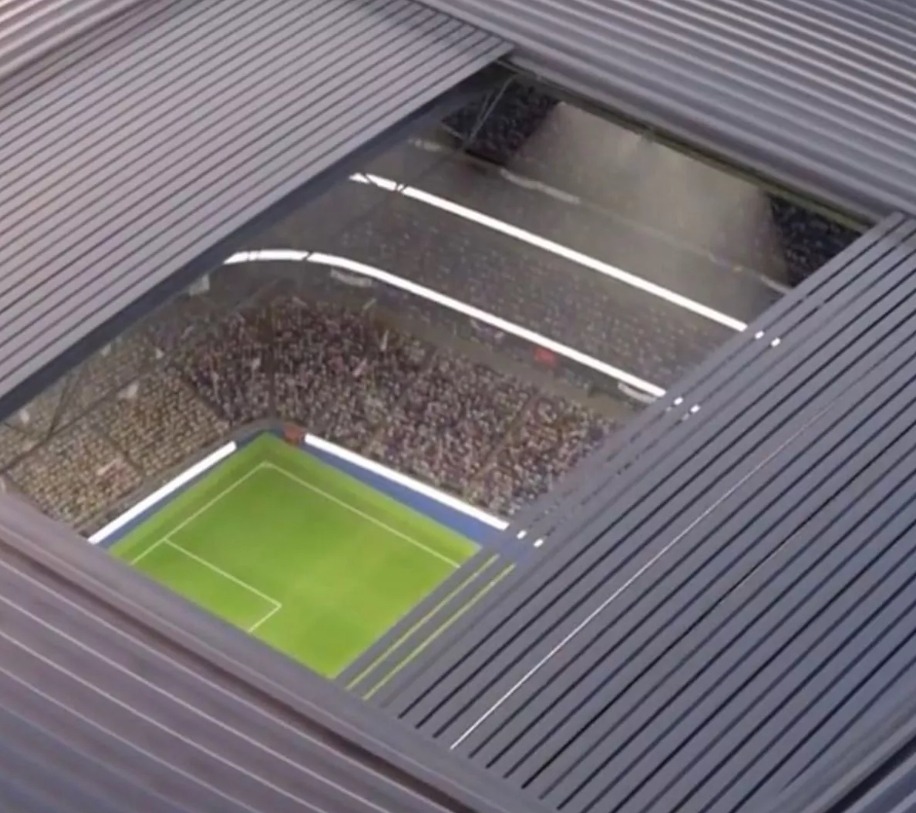
2. Retractable Roof
A key highlight of the renovation is the fully retractable roof, designed to cover the entire pitch when needed. This feature ensures year-round usability, protecting events from adverse weather conditions and enabling a wide range of activities beyond football, including concerts and conferences.
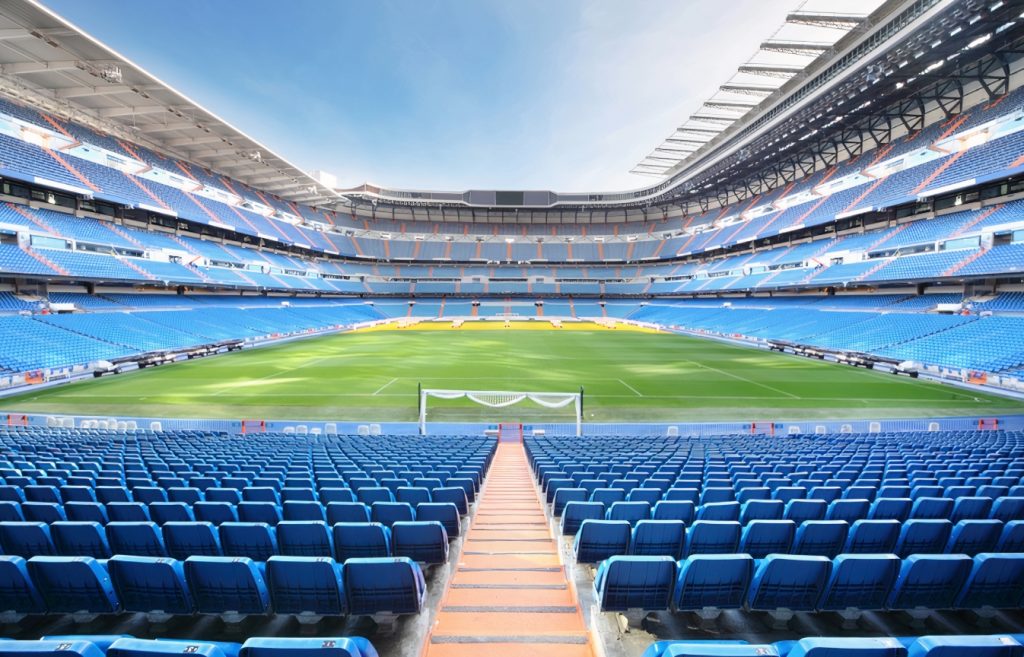
3. Advanced Seating and Accessibility
The redevelopment has increased seating capacity to approximately 85,000, with improved sightlines and comfort. Enhanced accessibility features, including elevators, ramps, and dedicated spaces for individuals with disabilities, reflect a commitment to inclusivity.
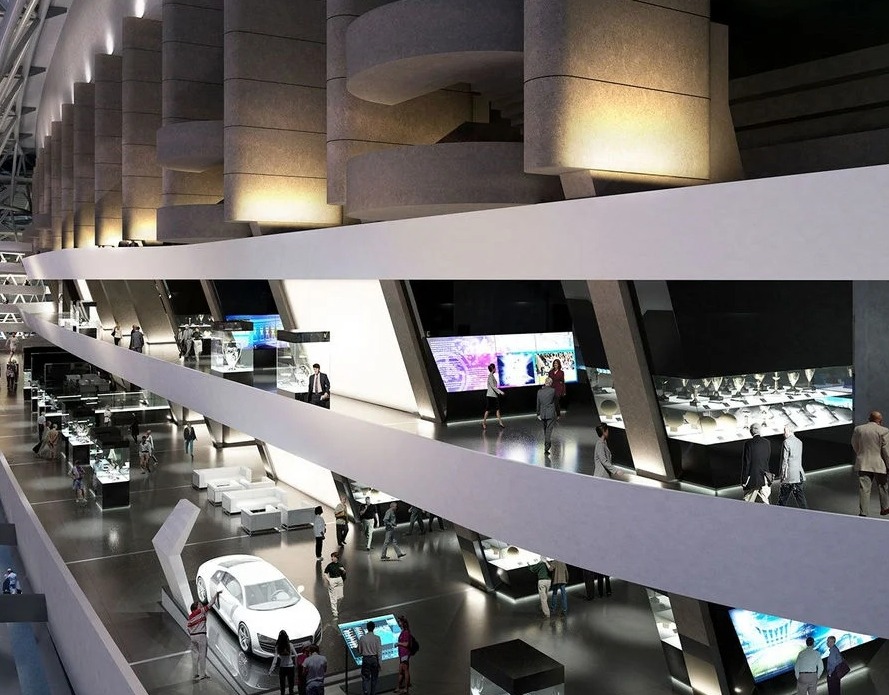
4. Multifunctional Spaces
The revamped stadium includes a variety of spaces, such as restaurants, museums, retail areas, and lounges. The integration of these elements transforms the venue into a year-round destination for fans and tourists alike.
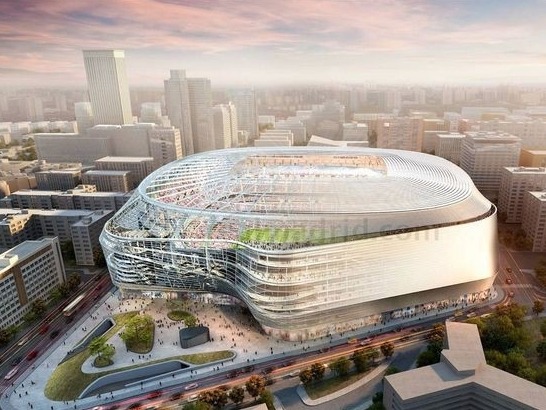
5. Sustainability
Sustainability has been a cornerstone of the new design. The stadium employs advanced energy-efficient systems, rainwater harvesting, and solar panels. The use of sustainable materials and a focus on minimizing the environmental footprint highlight the project’s alignment with modern environmental standards.
Integration with Urban Landscape
Located on Madrid’s Paseo de la Castellana, the Santiago Bernabéu seamlessly integrates with the urban fabric of the city. The redevelopment has enhanced the surrounding public spaces, including new pedestrian areas and improved public transport connections. The design prioritizes accessibility, ensuring that the stadium remains a vital part of the community.
Technological Innovations
The revamped Santiago Bernabéu incorporates cutting-edge technology, from 360-degree video screens to smart ticketing systems. One of its most groundbreaking features is the underground storage system for the retractable pitch. This innovation allows the field to be preserved in perfect condition while the stadium hosts non-sporting events.
A Global Icon
The Santiago Bernabéu Stadium is more than a venue; it is a symbol of Real Madrid’s legacy and a showcase of architectural excellence. Its design reflects a harmonious blend of tradition and innovation, serving as a model for future stadium projects worldwide. As it continues to evolve, it reinforces Madrid’s position as a global hub for sports, culture, and design.
In conclusion, the Santiago Bernabéu is not merely a stadium but a masterpiece of modern architecture. Its bold vision, state-of-the-art features, and commitment to sustainability make it a shining example of what a 21st-century urban landmark can achieve.

